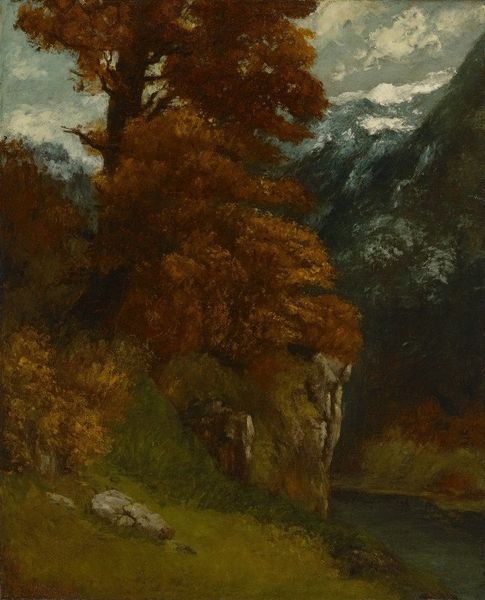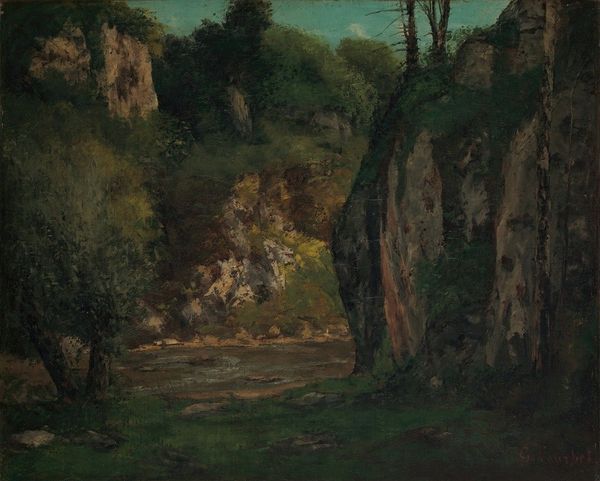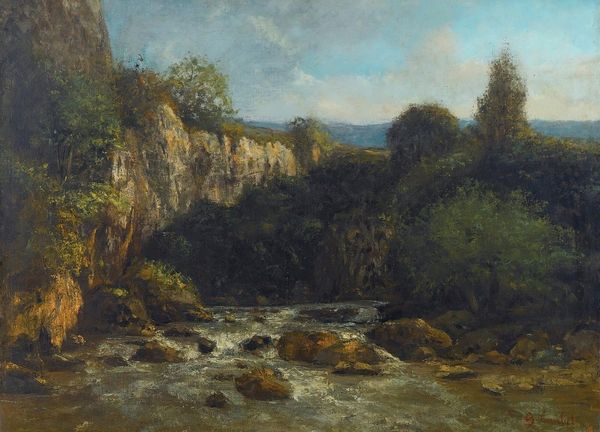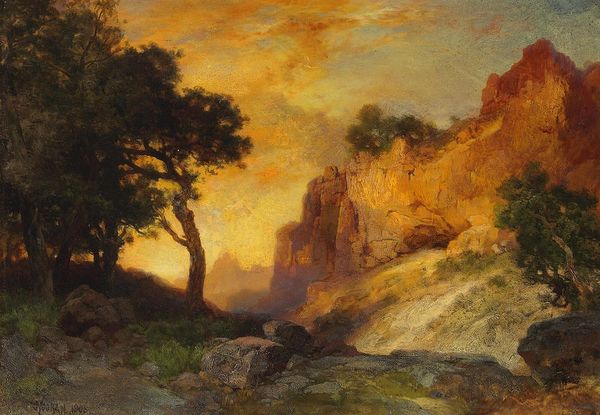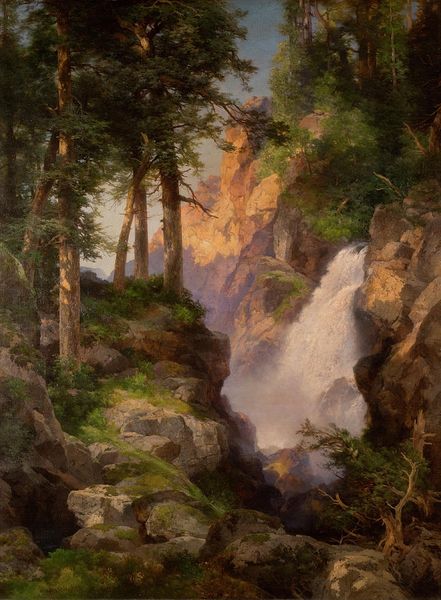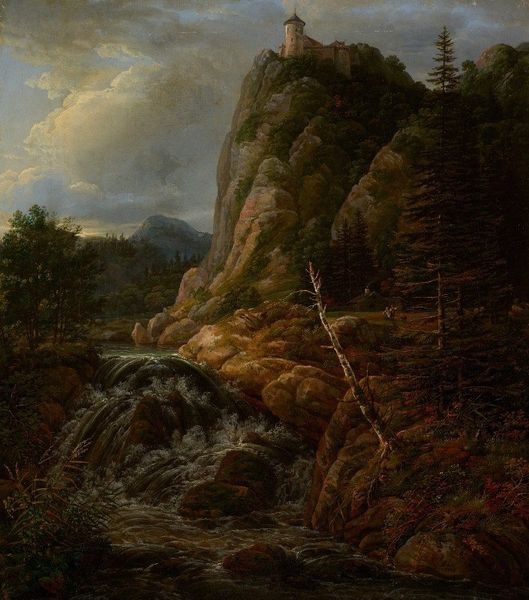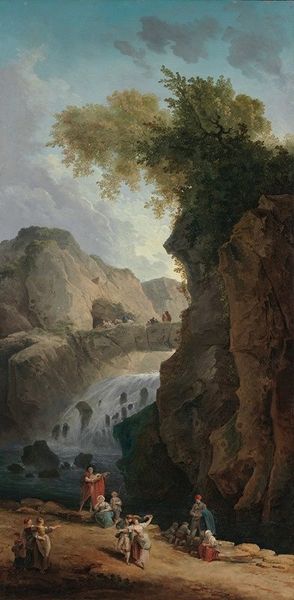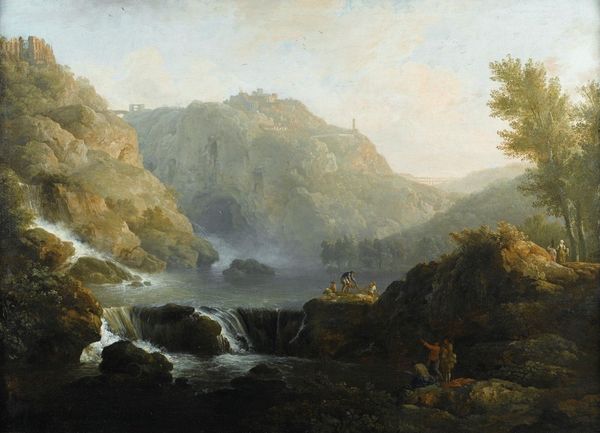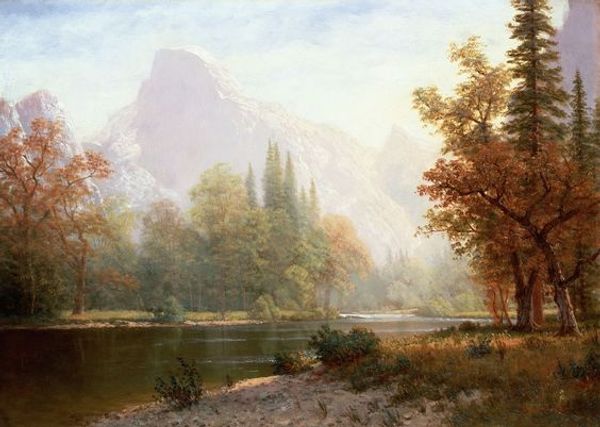
painting, plein-air, oil-paint
#
painting
#
plein-air
#
oil-paint
#
landscape
#
oil painting
#
romanticism
#
realism
Copyright: Public Domain: Artvee
Curator: Gustave Courbet, painted "Landscape Near Ornans," sometime in the mid-19th century using oil paints. What's striking to you right off? Editor: It’s immediately compelling. I see the raw power and serenity existing in the same space. The contrast between the rough rocks and foliage set against the calming water evokes a sense of the sublime and, yes, power. Curator: Right. Courbet's emphasis on depicting the unvarnished truth of nature aligns him with a broader movement toward realism and away from the more sentimental and idealizing tendencies of Romanticism, you know. Landscape painting allowed him to celebrate regional pride, this scene right here being close to his hometown. Editor: I do appreciate this direct connection to place, the way it sidesteps the colonial gaze found in many landscapes. His perspective is personal, familiar, a direct connection to lived experience and to local geological identity. Look at the color palette he employs, how much depth of light exists even within the muted tones. It really conveys the essence of this particular place, of the Franche-Comté. Curator: It's fascinating to look at the psychological aspect, right? Consider how this piece might embody certain ideas related to nature's inherent resilience and permanence. Or perhaps consider the artist's connection to a place where he finds grounding and refuge during times of societal shift, with landscape functioning here as emotional mirror and reflection, for stability. Editor: Agreed. Also, for many landscape artists of the era, landscape paintings provided a canvas through which to talk about themes of freedom, connection to earth, and defiance. By moving outside to paint, away from artifice of academies, Courbet asserted an autonomy from established rules. It's a kind of artistic liberation on canvas that connects to larger social and political shifts happening at the time. Curator: It’s about more than just art imitating nature; it's about exploring nature to access the profound connections and find our emotional, almost spiritual reflections in nature. Editor: Yes, precisely. Now seeing that reflection, I'm pondering on nature and freedom and our emotional connection to landscape itself, so it becomes both an image of a specific place but an embodiment of much larger concerns about identity and belonging, ultimately about the human relationship with the world.
Comments
No comments
Be the first to comment and join the conversation on the ultimate creative platform.
